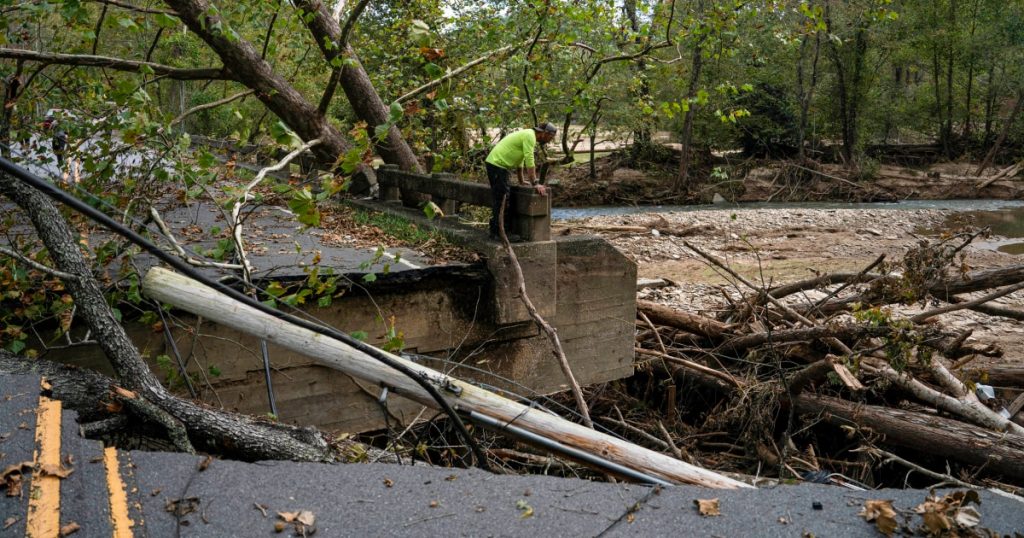The aftermath of a hurricane in North Carolina has left major roads and interstates in the state destroyed, making it difficult for trucks to reach communities in need. The devastation caused by the storm is described as unprecedented, with major thoroughfares for freight traffic impacted. Supply chain expert Robert Handfield estimates that it will take several weeks for the hard-hit areas to regain cell service and power, clear their roads, and obtain necessary medical supplies to allow trucks to bring in goods. The first priority is search and rescue, followed by commodity delivery, water restoration, and recovery efforts, according to FEMA Administrator Deanne Criswell.
Chloe Demrovsky, an executive in residence at New York University, notes that many of the most damaged communities were not prepared for the storm since it occurred hundreds of miles inland. Survivors are now faced with critical needs, as they work to replace everyday items, rebuild their homes and businesses, and purchase new vehicles. Unlike areas like Florida, where people are more familiar with hurricane season and tend to prepare in advance, the devastated communities in North Carolina were caught off guard by the storm. The process of recovery and rebuilding will be a lengthy and challenging one, as residents seek to piece their lives back together after the disaster.
FEMA has been mobilizing resources and personnel to bring aid to the affected areas, working in conjunction with local officials to address the needs of the communities. The agency has been focused on providing commodities, resources, and support to those impacted by the hurricane, ensuring that every person has access to the necessary assistance. Deanne Criswell emphasizes the importance of listening to the local officials and ensuring that resources are delivered where they are most needed, with a commitment to staying in the area until every person has everything they require to recover and rebuild.
The destruction caused by the hurricane has made it difficult for trucks and vehicles to navigate the roads and deliver essential supplies to the affected communities. With major highways and interstates damaged, the transportation of goods has been significantly impacted, adding additional challenges to the recovery efforts. The loss of infrastructure and communication lines in the region has also created obstacles in distributing aid and coordinating relief efforts, prolonging the recovery process for the devastated areas.
The unprecedented nature of the hurricane in North Carolina has highlighted the vulnerability of the region to severe weather events and the importance of preparedness and response measures. With major highways and thoroughfares destroyed, the state is facing significant logistical challenges in transporting goods and resources. The resilience and determination of the affected communities, along with the support from organizations like FEMA, will be key in helping them recover and rebuild in the aftermath of the disaster.
As the recovery efforts continue in North Carolina, the focus remains on providing essential services, commodities, and support to those impacted by the hurricane. The coordination between federal, state, and local agencies is crucial in ensuring that aid is delivered effectively and efficiently to the communities in need. The long-term recovery process will require a comprehensive approach that addresses not only the immediate needs of the survivors but also the rebuilding of infrastructure, homes, and businesses in the affected areas. The collaboration and dedication of all involved parties will be essential in helping North Carolina recover from the devastation caused by the hurricane.


